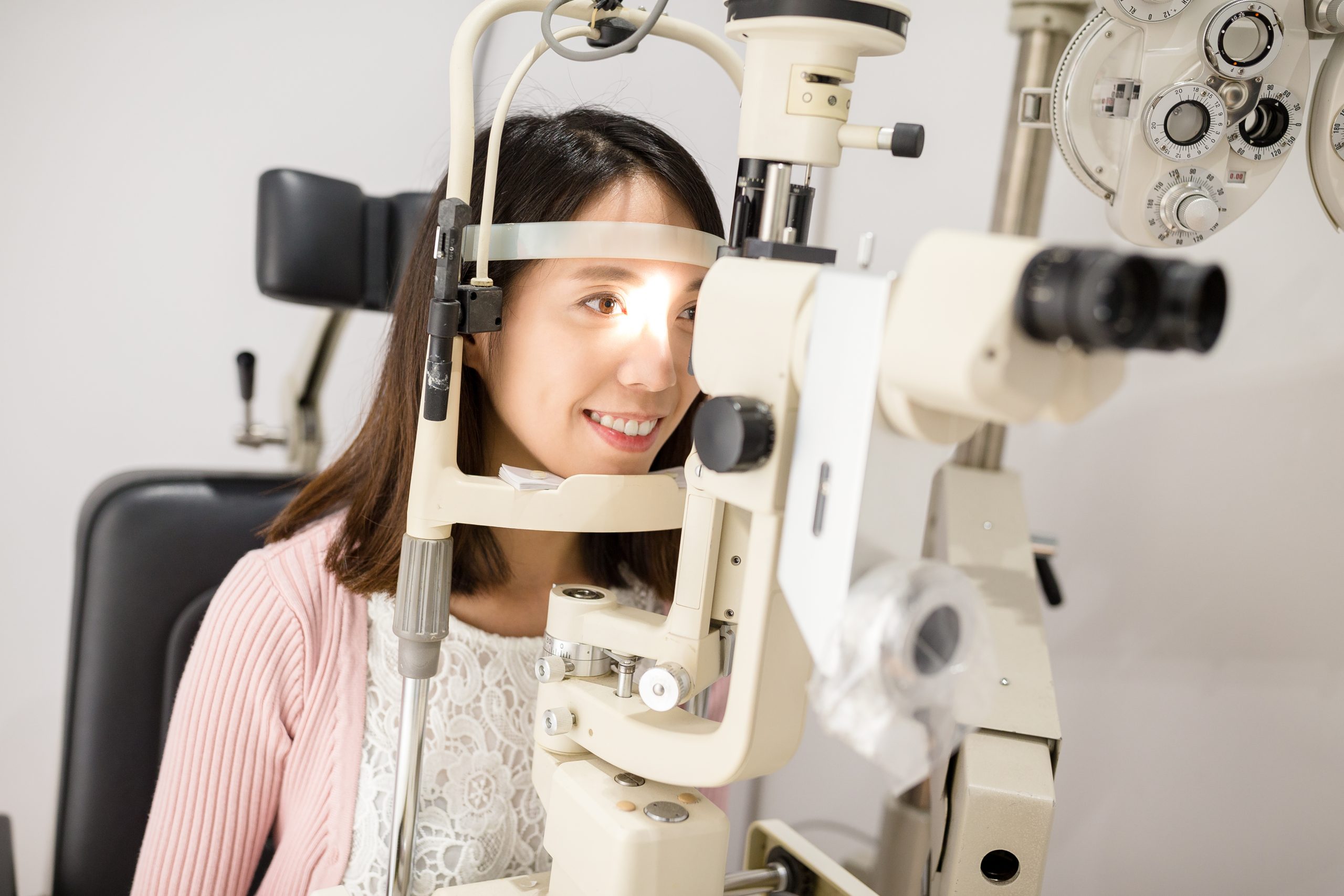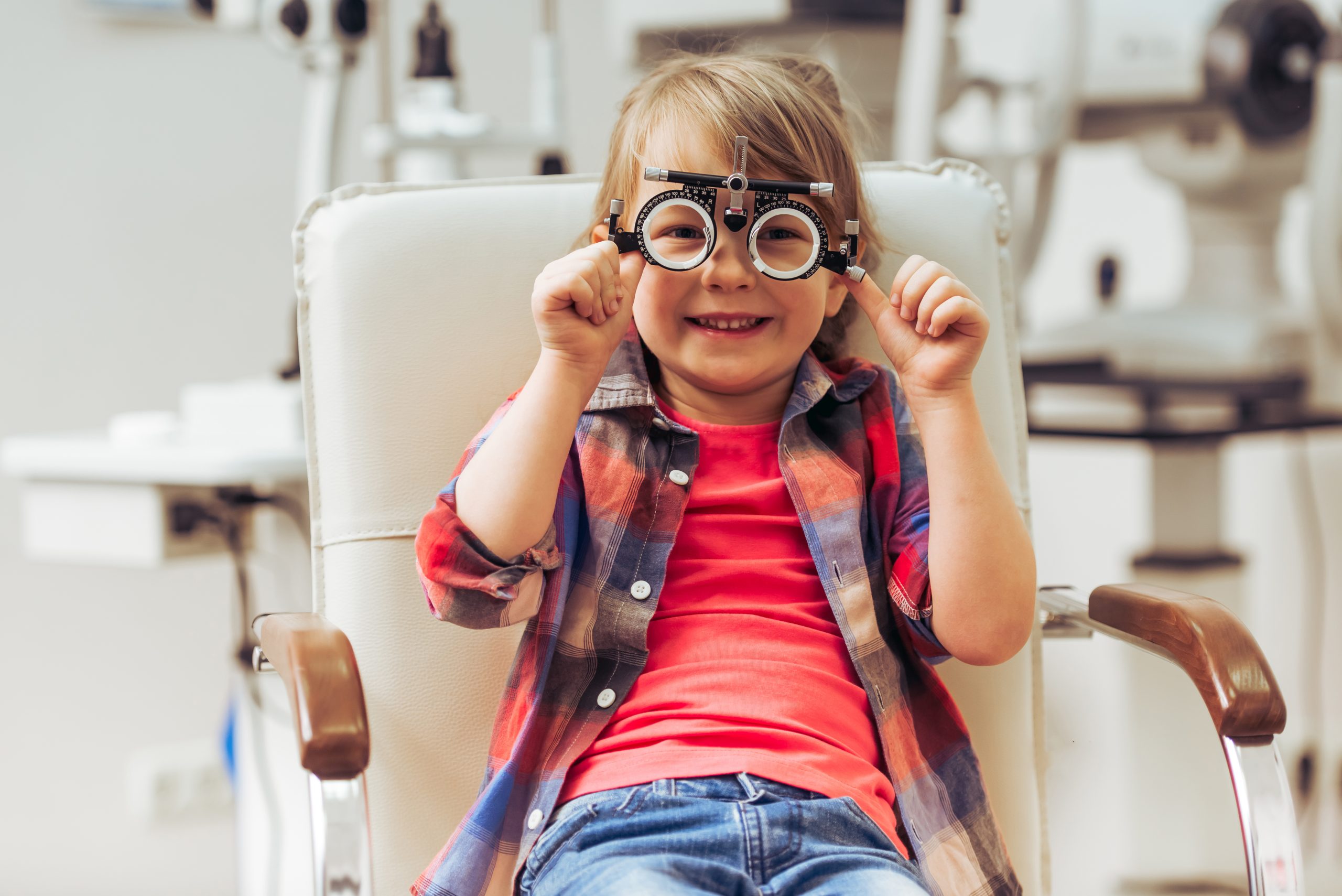Strabismus Eye Treatment in Parker, CO
At Good iSight Optometry & Vision Therapy, we help patients of all ages achieve clear, comfortable, and aligned vision. Led by Dr. Kalynn Good, our practice offers individualized strabismus treatment in Parker, CO, combining advanced diagnostics, personalized vision therapy, and compassionate care.
Strabismus, commonly known as crossed eyes, occurs when the eyes are misaligned and do not work together as a team. Whether caused by muscle imbalance, neurological factors, or uncorrected vision problems, early detection is essential to protect long-term eye health.
We specialize in non-surgical methods that strengthen eye coordination and retrain the brain for proper alignment. If you or your child experiences eye turn, double vision, or difficulty focusing, schedule a consultation online or call our Parker office today to begin your personalized care plan.

What Is Strabismus and How Is It Treated in Parker, CO?
Strabismus is a condition where one or both eyes point in different directions due to muscle or brain-eye communication issues. It can appear as esotropia (eyes turn inward), exotropia (outward), hypertropia (upward), or hypotropia (downward).
At Good iSight, we provide a complete approach to strabismus eye treatment. Depending on the cause and severity, treatment may include glasses, prism lenses, patching therapy, or customized vision therapy exercises. In cases where surgery is recommended, Dr. Good collaborates closely with ophthalmologic specialists and provides post-surgical vision therapy to help retrain binocular coordination for lasting results.
What Causes Strabismus and How Is It Diagnosed Near Parker, CO?
Strabismus can develop from a variety of causes, including eye-muscle imbalance, neurological disorders, genetics, trauma, or significant differences in prescription between the eyes.
At Good iSight Optometry & Vision Therapy, diagnosis begins with a thorough eye health evaluation. Dr. Good performs cover-uncover testing, ocular motility assessments, and binocular vision analysis to identify the underlying cause of the misalignment. As a residency-trained optometrist in neuro-optometric rehabilitation, she uses advanced tools to pinpoint visual-system weaknesses and create a treatment plan that restores efficient visual function.
Visual Therapy Services that Unlock Your Vision Potential
Book Your Appointment Today
What Treatment Options Are Available for Strabismus Near Parker, CO?
Our team offers comprehensive strabismus correction options to improve both visual alignment and quality of life:
- Corrective lenses or prism glasses to reduce eye strain and support alignment.
- Vision therapy to retrain visual processing and strengthen eye coordination.
- Patching or occlusion therapy for amblyopia (lazy eye) associated with strabismus.
- Surgery, when necessary, followed by vision therapy to stabilize binocular vision.
We prioritize non-surgical treatment whenever possible to help patients achieve natural, lasting eye alignment. Many patients notice improvements in depth perception, reading ability, and visual comfort within weeks of beginning therapy.
At What Age Should a Child Get Checked for Strabismus?
Early detection is key to preventing permanent visual challenges. Children can be evaluated for strabismus as early as six months old and should have routine eye exams by age three.
Dr. Good provides gentle, age-appropriate eye testing and a warm, welcoming environment for families. Identifying and treating strabismus early helps ensure proper visual development and reduces the risk of amblyopia or learning-related vision issues later in life.
Does Insurance Cover Strabismus Treatment in Parker, CO?
Coverage for strabismus treatment varies depending on the diagnosis and your specific insurance plan. Many medical and vision insurance providers cover strabismus evaluations, prism lenses, or vision therapy if deemed medically necessary.
Our team at Good iSight is happy to assist you in verifying benefits and helping with pre-authorization paperwork. We accept most major vision and medical insurance plans, making treatment more accessible for families throughout Parker and surrounding communities.
How Long Is Recovery After Strabismus Surgery?
If surgery is required, recovery time typically ranges from a few days to a few weeks. Mild soreness, redness, or temporary double vision is common during the healing process.
At Good iSight, Dr. Good works with your ophthalmologic surgeon to coordinate post-surgical care and vision therapy. This combination helps restore depth perception and reinforces the brain-eye connection for stable alignment. Continued therapy supports long-term visual success after surgery.
Will I Need Glasses or Prisms After Strabismus Surgery?
Some patients benefit from prism lenses or updated prescription glasses following surgery to refine alignment and maintain comfort. Dr. Good carefully monitors your recovery, adjusting your optical correction as needed to reduce strain and improve binocular vision.
By integrating vision therapy into your recovery plan, we can strengthen eye coordination and help you achieve comfortable, lasting visual performance.
What Should I Expect at My First Consultation for Strabismus Treatment?
Your first visit at Good iSight Optometry & Vision Therapy begins with an in-depth conversation about your symptoms, medical history, and daily visual demands.
During the evaluation, Dr. Good will assess visual acuity, eye alignment, and binocular function. After testing, she explains findings clearly, outlines recommended treatment options, and creates a customized care plan that fits your goals. Most importantly, she ensures every patient understands how therapy will improve their quality of life—whether it’s sharper focus, better coordination, or relief from double vision.
What Makes Good iSight the Preferred Strabismus Eye Doctor in Parker, CO?
Patients choose Good iSight because of Dr. Good’s unique combination of advanced training, technology, and compassion. She completed a residency in vision therapy and neuro-optometric rehabilitation, giving her specialized expertise in functional vision recovery.
Our practice emphasizes:
- Comprehensive, individualized care for adults and children
- Advanced diagnostic technology for precise results
- Personalized vision therapy programs that deliver measurable improvement
- A supportive, educational environment where patients understand each step of care
Families throughout Parker, Castle Rock, and Lone Tree trust Dr. Good to restore visual alignment and confidence. As one patient shared, “Dr. Good is the most amazing doctor we’ve found!”
Why Early Evaluation and Vision Therapy Matter
Early evaluation can prevent long-term visual impairment and strengthen the connection between the eyes and brain. According to clinical research, early therapy leads to better outcomes in visual function and stereopsis (depth perception).
Vision therapy helps retrain the neural pathways that control eye movement and coordination. At Good iSight, we use evidence-based exercises and individualized programs that improve visual performance without surgery. This proactive approach allows patients to experience clearer, more stable vision and renewed confidence in everyday activities.

Schedule Your Strabismus Evaluation at Good iSight in Parker, CO!
At Good iSight Optometry & Vision Therapy, our goal is to help you or your loved one see life in clear, confident focus. Whether you need an evaluation for strabismus, crossed eyes, or ongoing vision therapy, Dr. Kalynn Good and her team provide trusted care for every stage of treatment.
Call or schedule online today to begin your personalized strabismus therapy plan at Good iSight in Parker, CO—where better vision begins with understanding and a plan made just for you.
